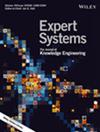Age-at-death estimation is an arduous task in human identification based on characteristics such as appearance, morphology or ossification patterns in skeletal remains. This process is performed manually, although in recent years there have been several studies that attempt to automate it. One of the most recent approaches involves considering interpretable machine learning methods, obtaining simple and easily understandable models. The ultimate goal is not to fully automate the task but to obtain an accurate model supporting the forensic anthropologists in the age-at-death estimation process. We propose a semi-automatic method for age-at-death estimation based on nine pubic symphysis traits identified from Todd's pioneering method. Genetic programming is used to learn simple mathematical expressions following a symbolic regression process, also developing feature selection. Our method follows a component-scoring approach where the values of the different traits are evaluated by the expert and aggregated by the corresponding mathematical expression to directly estimate the numeric age-at-death value. Oversampling methods are considered to deal with the strongly imbalanced nature of the problem. State-of-the-art performance is achieved thanks to an interpretable model structure that allows us to both validate existing knowledge and extract some new insights in the discipline.


